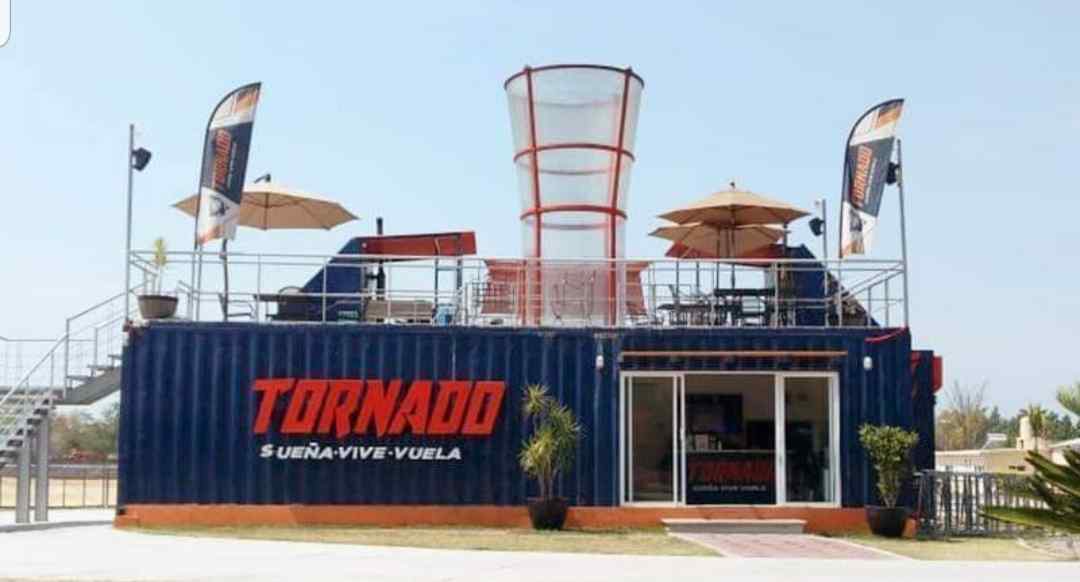Features
A Mexican Holiday: Margaritas, Tacos, and… Indoor Skydiving?
Mexico’s FLY Tornado tunnel was the first indoor skydiving site in the country. To date, it’s the only wind tunnel open to the general public.

[the_ad_placement id=”article-above-content-mobile-only”]
When you think of a Mexican vacation, you probably think of white sand beaches, margaritas, street tacos, and perhaps crumbling Aztec ruins. What you might not consider, however, is a skydiving adventure! Situated in the small landlocked state of Morelos, an hour and a half due south of Mexico City, the FLY Tornado wind tunnel was Mexico’s first wind tunnel and began welcoming fliers in 2015.
Indoor Skydiving Source heard from Manuel Calleja, the tunnel’s owner and operator, who was, in his words, “born in the skydiving business.”
His father founded the first tandem dropzone in Mexico in 1988, when Calleja was four years old. He grew up skydiving, bought the mobile Tornado wind tunnel in September 2017, and has owned and operated it since then. He’s not shy of admitting that he has scant indoor experience compared to outdoor (currently, Calleja has approximately 9,000 tandem and 4,000 solo skydives under his belt), but is still passionate about the increased accessibility, safety, and control that indoor flying brings to the industry.
While there are currently three wind tunnels technically operating in Mexico, FLY Tornado is the only one that serves the general public and provides services to skydivers (the other two wind tunnels are part of a tourism company and are a closed part of its package attractions).

FLY Tornado is part of the Skydive Mexico drop zone (DZ) facilities and is regularly used by its skydivers for training. “Our AFF (Accelerated Free Fall) course includes time in the tunnel, in addition to helping our students to develop and practice free fly,” said Calleja. “Having the tunnel at the DZ is incredible. Students, coaches, and divers practice their skills and can hop in the plane in a matter of minutes.
On average, Calleja said, FLY Tornado runs for 1,000 to 1,200 sets of 2-minute flights per month, at a maximum speed of 167 miles per hour. The working chamber measures 2.2 meters (7.2 ft) wide and 6 meters (19.7 ft) high. Prices are extraordinarily cheap, by US wind tunnel standards. A two-minute flight costs a mere 350 Mexican pesos (just shy of $17 at the current exchange rate), while hour-long sessions run for 8,500 pesos ($400). He has welcomed fliers as young as two years old, and as old as 86.
The most unique thing about FLY Tornado, however, is that the tunnel is entirely mobile. It can be deployed within two hours just about anywhere, such as for a concert or other public event. “Our Mobile Wind Tunnel (MTA) is a vertical wind tunnel in the form of a separate mobile module with an open aerodynamic contour,” said Calleja. “The module is completed with a closed working area made of high-strength laminated glass with a thickness of 22 mm. For demonstration performances and workouts, the installation can even be used without a working chamber.”
Another major asset, Calleja said, is that the modular mobile design “does not require capital construction and labor-intensive preparatory installation and commissioning. It can be installed on an unprepared pad with any surface,” almost instantly. The tunnel also does not require an external power connection and can be hauled by a simple tractor with a platform.
Business at both FLY Tornado and Skydive Mexico, Calleja said, is only growing, despite setbacks from the coronavirus pandemic. “We have more and more people [coming] to take advantage of the wind tunnel,” he said. “It is a very effective tool which is helping us to develop skydiving in Mexico. Obviously, COVID-19 affected our operation, but today things are going better … our community is growing. We have many skydivers coming from all over South America: Colombia, Peru, Argentina, and Chile.”
Regarding the indoor skydiving industry overall, Calleja was optimistic about the future. “It is a wonderful sport that has come to revolutionize [traditional] skydiving,” he said. “I am sure that in five years our community of participants will be much larger. It is an industry with a lot of opportunity for growth, as it has made skydiving safer and also allows children to get involved in the sport at an early age.”
You can find more information about the FLY Tornado wind tunnel on their Facebook page or their website. Calleja also plans to open a second wind tunnel next year, at a new drop zone.
Published: December 20, 2021 | Last Updated: December 22, 2021
Don’t miss an update!
Join our mailing list for the latest indoor skydiving updates delivered directly to your inbox.
"*" indicates required fields

